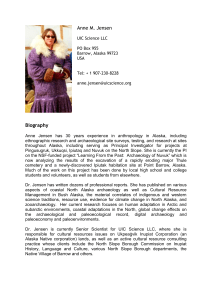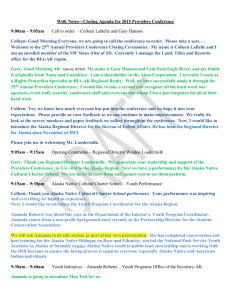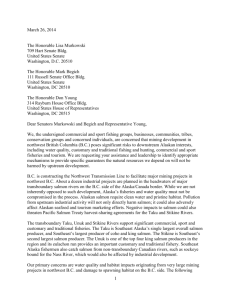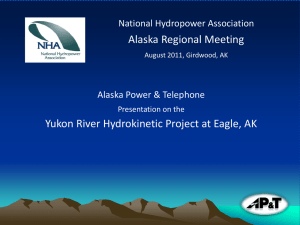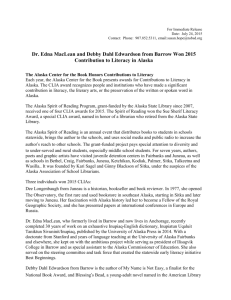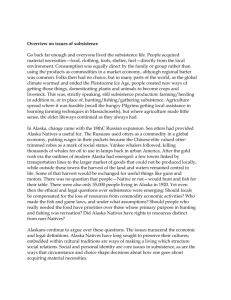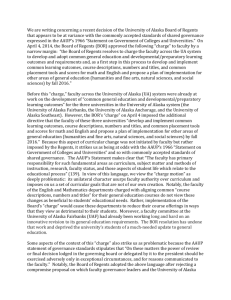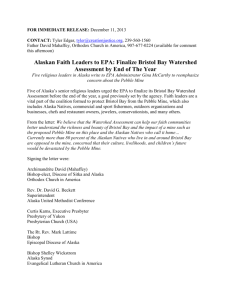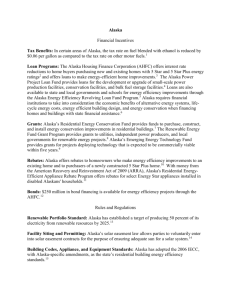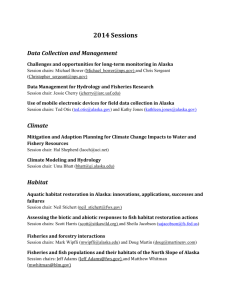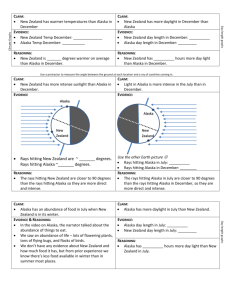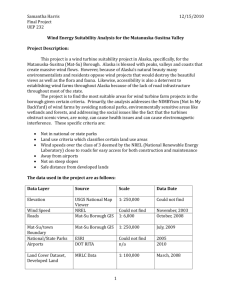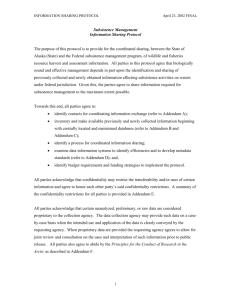(Salutation), The economy, lifestyle and culture of SE Alaska is
advertisement
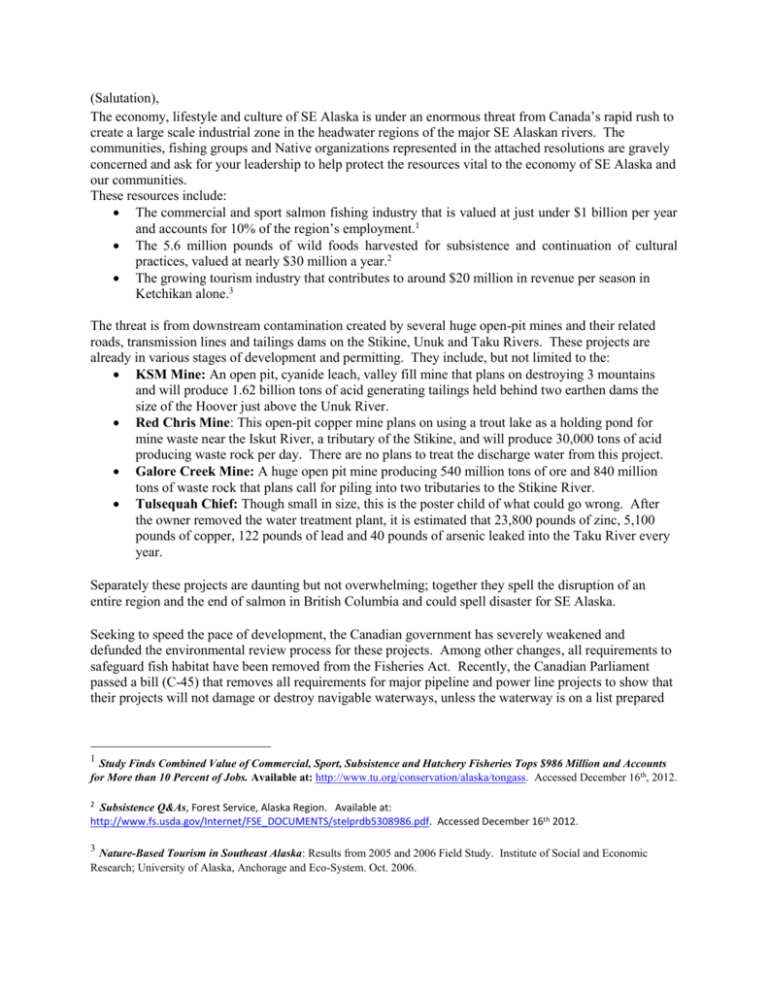
(Salutation), The economy, lifestyle and culture of SE Alaska is under an enormous threat from Canada’s rapid rush to create a large scale industrial zone in the headwater regions of the major SE Alaskan rivers. The communities, fishing groups and Native organizations represented in the attached resolutions are gravely concerned and ask for your leadership to help protect the resources vital to the economy of SE Alaska and our communities. These resources include: The commercial and sport salmon fishing industry that is valued at just under $1 billion per year and accounts for 10% of the region’s employment.1 The 5.6 million pounds of wild foods harvested for subsistence and continuation of cultural practices, valued at nearly $30 million a year.2 The growing tourism industry that contributes to around $20 million in revenue per season in Ketchikan alone.3 The threat is from downstream contamination created by several huge open-pit mines and their related roads, transmission lines and tailings dams on the Stikine, Unuk and Taku Rivers. These projects are already in various stages of development and permitting. They include, but not limited to the: KSM Mine: An open pit, cyanide leach, valley fill mine that plans on destroying 3 mountains and will produce 1.62 billion tons of acid generating tailings held behind two earthen dams the size of the Hoover just above the Unuk River. Red Chris Mine: This open-pit copper mine plans on using a trout lake as a holding pond for mine waste near the Iskut River, a tributary of the Stikine, and will produce 30,000 tons of acid producing waste rock per day. There are no plans to treat the discharge water from this project. Galore Creek Mine: A huge open pit mine producing 540 million tons of ore and 840 million tons of waste rock that plans call for piling into two tributaries to the Stikine River. Tulsequah Chief: Though small in size, this is the poster child of what could go wrong. After the owner removed the water treatment plant, it is estimated that 23,800 pounds of zinc, 5,100 pounds of copper, 122 pounds of lead and 40 pounds of arsenic leaked into the Taku River every year. Separately these projects are daunting but not overwhelming; together they spell the disruption of an entire region and the end of salmon in British Columbia and could spell disaster for SE Alaska. Seeking to speed the pace of development, the Canadian government has severely weakened and defunded the environmental review process for these projects. Among other changes, all requirements to safeguard fish habitat have been removed from the Fisheries Act. Recently, the Canadian Parliament passed a bill (C-45) that removes all requirements for major pipeline and power line projects to show that their projects will not damage or destroy navigable waterways, unless the waterway is on a list prepared 1 Study Finds Combined Value of Commercial, Sport, Subsistence and Hatchery Fisheries Tops $986 Million and Accounts for More than 10 Percent of Jobs. Available at: http://www.tu.org/conservation/alaska/tongass. Accessed December 16th, 2012. 2 Subsistence Q&As, Forest Service, Alaska Region. Available at: http://www.fs.usda.gov/Internet/FSE_DOCUMENTS/stelprdb5308986.pdf. Accessed December 16th 2012. 3 Nature-Based Tourism in Southeast Alaska: Results from 2005 and 2006 Field Study. Institute of Social and Economic Research; University of Alaska, Anchorage and Eco-System. Oct. 2006. by the transportation minister. According to some estimates, this leaves 99.9% of lakes and rivers in Canada unprotected. This bill also overhauled the Environmental Assessment process reducing the number of projects that would require any type of environmental review. These developments have caused much concern on both sides of the border. A recent letter from 625 concerned scientist’s state: “The scale and intensity of proposed development certainly will fragment the watersheds with roads, transmission lines, river diversion projects, and open pit mines. Habitat for salmon and other wildlife will be destroyed at the development sites. Cumulative impacts likely will cascade throughout the watersheds in the form of altered flow and temperature patterns, disturbance to wildlife interacting with roads, and reduced water quality associated with sedimentation and acid mine drainage”.4 To make matter worse, the U.S. Department of Interior has decided to remove itself from the consultation process with the Canadian Environmental Review Board citing lack of resources to participate. Currently there is no U.S representation on the technical advisory groups. SE Alaska is completely unprotected. As we have seen in Washington State and now in Montana5 this threat is very real. We are formally asking you to take the necessary steps to facilitate direct meetings with the British Columbia Ministry of the Environment and our U.S. Departments of Interior and State to make sure Alaska’s precious resources are protected. We also request that the communities and Tribes in SE Alaska be included in this process. No one is more knowledgeable or more dependent upon keeping these rivers uncontaminated. We eagerly look forward to your response. 4 Canadian Scientists Implore Federal Government to Protect Fisheries Act, 625 scientists call on Prime Minister Harper not to prioritize industry growth over habitat and species protection. Available at: http://thetyee.ca/Documents/2012/03/23/Press_release-_Scientists%27_letter_to_the_PM%5B1%5D.pdf. Accessed 12/21/12. 5 http://missoulian.com/news/local/canada-mining-expansion-prompts-fears-of-pollution-flowing-intomontana/article_050c5020-498d-11e2-b663-0019bb2963f4.html. Accessed January 8, 2103.





